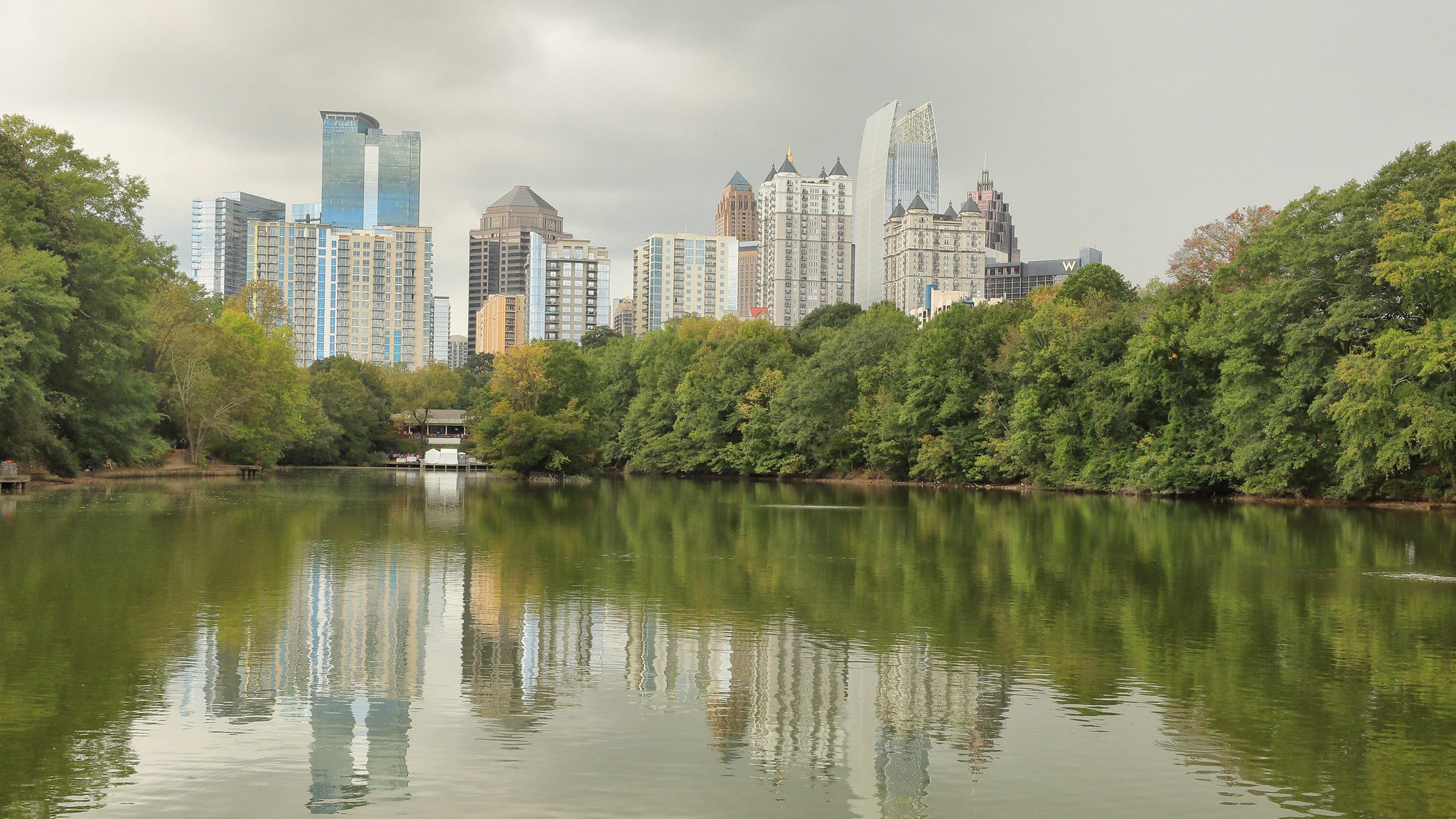New Publication and Data Release: Land Use Change and Water Demand Projections for Southeast

2015 – 2016 Global Change Fellow, Georgina Sanchez, USGS Research Ecologist, Adam Terando, SE CASC Faculty Affiliate, Ross Meentemeyer, and others authored a recent SE CASC supported publication, “Forecasting water demand across a rapidly urbanizing region,” in the journal Science of the Total Environment. The paper is accompanied by publication of a USGS data release that includes land-use change and water demand projections (2012-2065) under various scenarios of environmental change for North Carolina, South Carolina, and coastal Georgia.
Forecasting water demand across a rapidly urbanizing region
Journal Abstract
Read the paper here.
Urban growth and climate change together complicate planning efforts meant to adapt to increasingly scarce water supplies. Several studies have independently examined the impacts of urban planning and climate change on water demand, but little attention has been given to their combined impact. Here we forecast urban water demand using a Geographically Weighted Regression model informed by socio-economic, environmental and landscape pattern metrics. The purpose of our study is to evaluate how future scenarios of population densities and climate warming will jointly affect water demand across two rapidly growing U.S. states (North Carolina and South Carolina). Our forecasts indicate that regional water demand by 2065 will increase by 37%–383% relative to the baseline in 2010, across all scenarios of change. Our results show future water demand will increase under rising temperatures, but could be ameliorated by policies that promote higher density development and urban infill. These water-efficient land use policies show a 5% regional reduction in water demand and up to 25% reduction locally for counties with the highest expected population growth by 2065. For rural counties experiencing depopulation, the land use policies we considered are insufficient to significantly reduce water demand. For expanding communities seeking to increase their adaptive capacity to changing socio-environmental conditions, our framework can assist in developing sustainable solutions.

Image Credit: Science of the Total Environment
Sanchez, G.M., A. Terando, J.W. Smith, A.M. García, C.R. Wagner, R.K. Meentemeyer, Forecasting water demand across a rapidly urbanizing region, Science of The Total Environment 730, 139050 (2020), https://doi.org/10.1016/j.scitotenv.2020.139050.
Land-use and water demand projections (2012 to 2065) under different scenarios of environmental change for North Carolina, South Carolina, and coastal Georgia
Data Release Summary
Download here.
Urban growth and climate change together complicate planning efforts meant to adapt to increasingly scarce water supplies. Several studies have shown the impacts of urban planning and climate change separately, but little attention has been given to their combined impact on long-term urban water demand forecasting. Here we coupled land and climate change projections with empirically-derived coefficient estimates of urban water use (sum of public supply, industrial, and domestic use) to forecast water demand under scenarios of future population densities and climate warming. We simulated two scenarios of urban growth from 2012 to 2065 using the FUTure Urban-Regional Environment Simulation (FUTURES) framework. FUTURES is an open-source probabilistic land change model designed to address the regional-scale environmental and ecological impacts of urbanization. We simulated an urbanization scenario that continues the historic trend of growth referred to as “Status Quo” and a scenario that simulates patterns of clustered higher density development, referred to as “Urban Infill”. We initialized land change projections in 2011 and run forward on an annual time step to 2065. We captured the uncertainty associated with future climate conditions by integrating three Global Climate Models (GCMs), representative of dry, wet, and median future conditions. GCMs follow a continuously increasing greenhouse gas emissions scenario (Representative Concentration Pathway; RCP 8.5). This data release includes: a) land change projections for both urbanization scenarios in a spatial resolution consistent with the National Land Cover Database; b) development-related water demand projections for scenarios of environmental change at the census tract spatial unit summarized by 2030 and 2065; and c) the spatial boundaries of census tracts presented as a shapefile.
Sanchez, G.M., Terando, A., Smith, J.W., Garcia, A.M., Wagner, C.R., and Meentemeyer, R.K., 2020, Land-use and water demand projections (2012 to 2065) under different scenarios of environmental change for North Carolina, South Carolina, and coastal Georgia: U.S. Geological Survey data release, https://doi.org/10.5066/P95PTP5G.
- Categories:
